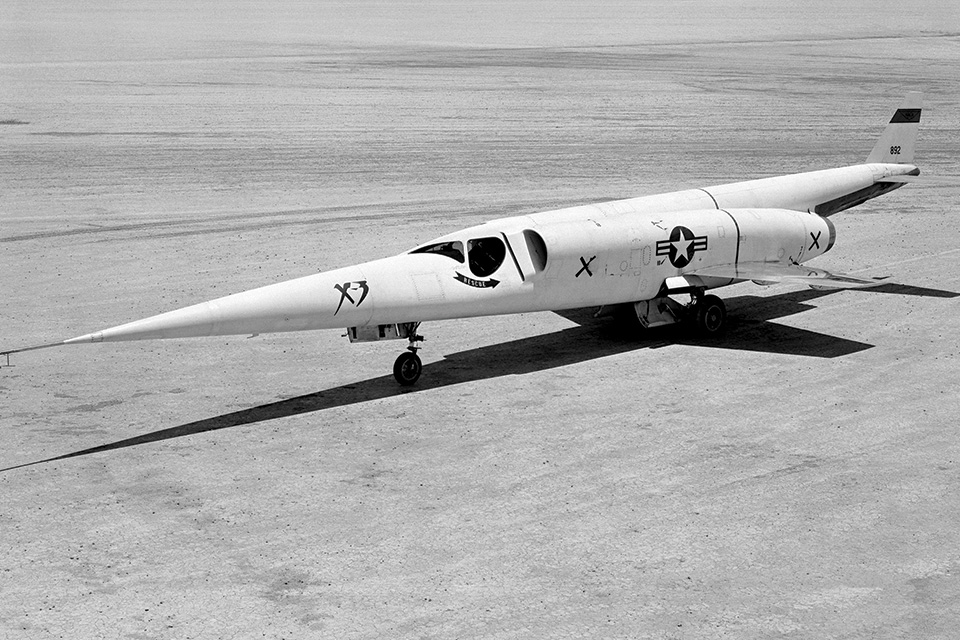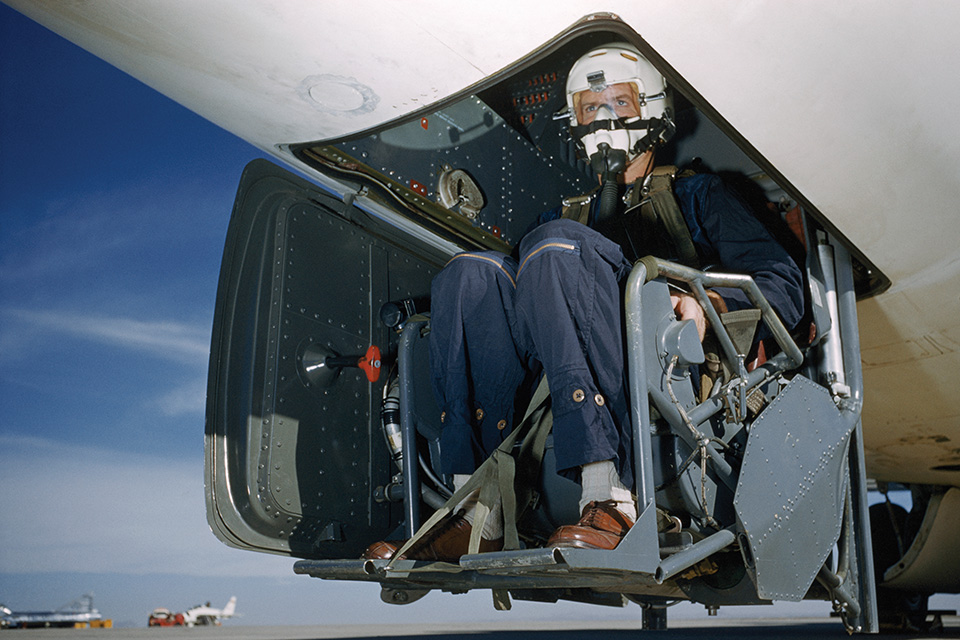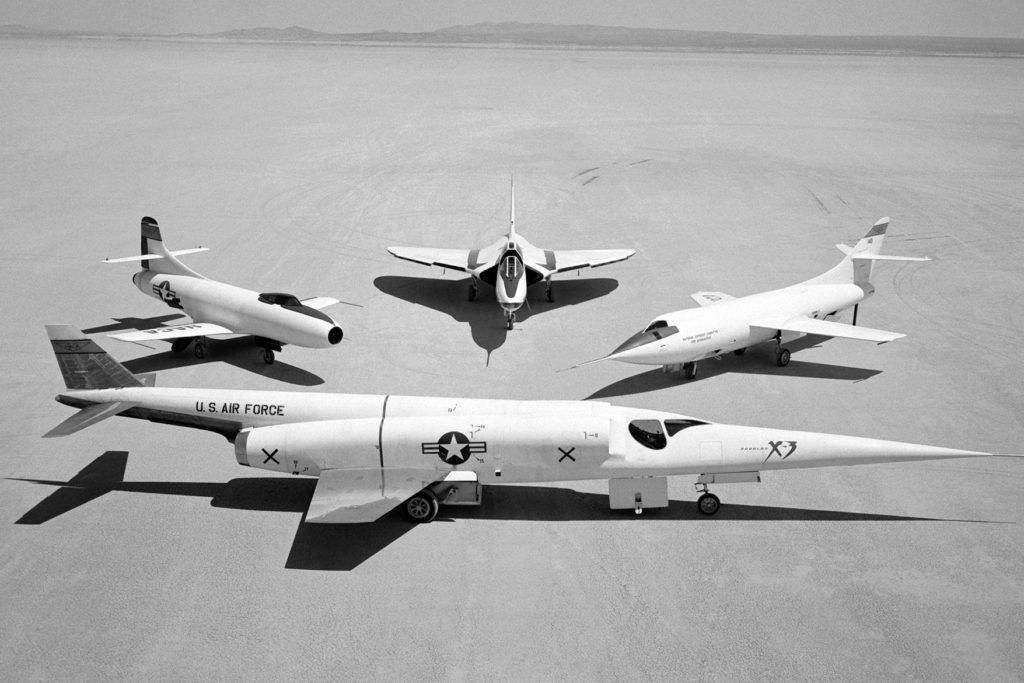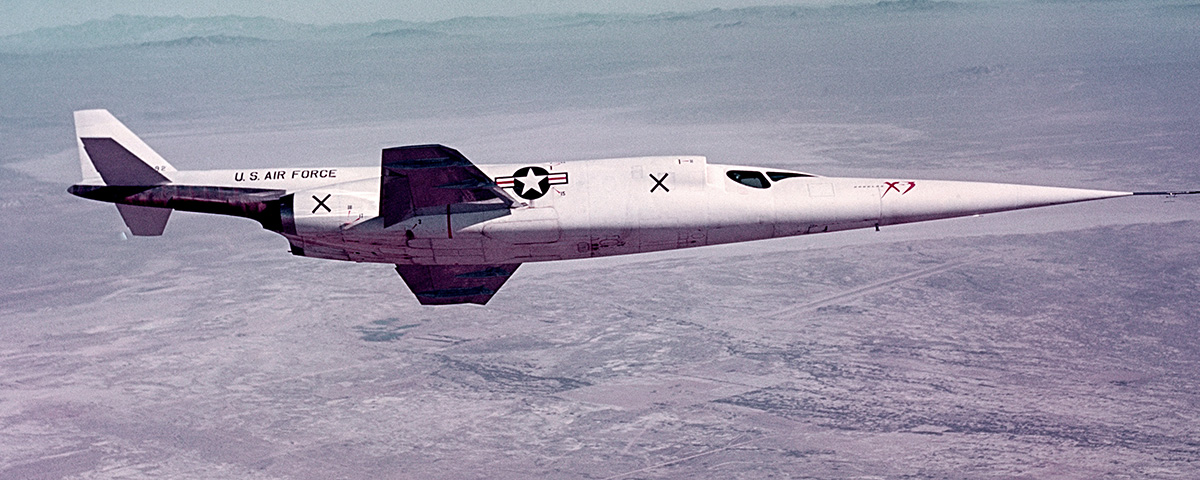Aviation enthusiasts who started out building plastic models the 1950s likely remember the sleek, shapely designs they just to find for their collections. Among the most sought-after were the supersonic X-planes, including the X-3, unofficially nicknamed the Stiletto. Its overall look—the long, needle-nosed fuselage, those impossibly vestigial-looking wings, that art deco windscreen—gave the impression it was capable of going twice the speed of sound and reaching the threshold of outer space. Unfortunately, the X-3’s performance never lived up to expectations because, like many jets of the era, it was underpowered and overweight.
As far back as 1941, the U.S. Army Air Forces asked the Douglas AircraftCompany to look into the possibilities of supersonic flight. A specific request for a Mach 1–capable research aircraft followed in December 1943, and Douglas submitted a tentative program for approval a month later. On June 30, 1945, Secretary of War Henry L. Stimson approved a request for Douglas to develop an airplane capable of sustaining Mach 2 at 30,000 feet, flying for at least 30 minutes and—in contrast to the concurrent rocket-powered Bell XS-1—taking off and landing under its own power.

Douglas engineers worked on an airframe powered by various combinations of jet and rocket engines until 1947, when Westinghouse announced it was developing a new afterburner-equipped turbojet, the J46, which would raise the existing J34’s output of 23,400 pounds thrust to 4,200 pounds, pushed to 6,600 using afterburner. That prospect allowed the Douglas team to dispense with rocket boosters and build their airplane around a pair of J46 jets. Once the airframe design was finalized, the Air Force signed an agreement on June 30, 1949, calling for Douglas to construct two Model 499D aircraft under the service designation of X-3.
As early as 1948, it became clear that the J46 faced a longer, more complicated development process than originally projected. As an interim measure Douglas built its X-plane around the J34-WE-17, which was similar in dimensions to the J46 but produced only 4,850 pounds thrust on afterburner. In 1950 the National Advisory Committee for Aeronautics (NASA’s predecessor) recommended a 40 percent larger horizontal tail to deal with oscillation problems encountered during model test ing. On September 30, 1951, Douglas rolled the first X-3, serial no. 49-2892, out of its Santa Monica, Calif., plant, but the design required further work and beefing up before it was approved for its first flight. By the time 2892 was delivered to Edwards Air Force Base on September 11, 1952, the uncompleted second prototype had been canceled and relegated to providing spare parts. NACA officials were by then resigned to making do with the J34-WE-17 engine, since the J46 was still not ready.
The X-3’s long beak housed the nose landing gear, flight test instrumentation and electrical equipment. The airframe was primarily constructed of 24S-T81 aluminum alloy. Stainless steel, molybdenum and magnesium alloy were intended for surfaces exposed to intense heat, but late in 1949 Douglas obtained NACA and Air Force approval to substitute titanium, still an experimental metal, for the steel and molybdenum on sensitive areas such as the thin tail boom, afterburner and tail cone section, resulting in a saving of 395 pounds.

The X-3’s first official flight on October 20, 1952, with a takeoff s peed of 260 mph, required a sensitive hand on the elevator. The plane was clearly underpowered, and pilot William B. Bridgeman radioed Major Charles E. Yeager, piloting the North American F-86 chase plane, “This thing doesn’t want to stay in the air.” Bridgman touched down at 240 mph, grateful that Edwards’ dry lakebed offered plenty of room.
As the J46 engine was never forthcoming, the fastest the X-3 ever went was Mach 1.21, when Bridgeman put it into a 30-degree dive from 36,000 feet on July 28, 1953. On October 21, the right engine lost portions of its turbine blades, compelling Bridgeman to make a single-engine landing on afterburner. After the 25 th flight on December 2, the X-3 was turned over to the Air Force, which conducted three test flights each by Chuck Yeager and Lt. Col. Frank K. Everest, who after experience ing its sluggish controls at low speeds called it “one of the most difficult airplanes I have ever flown.”

The Stiletto then went on to 20 flights by NACA. During the 10th on October 27, 1954, Joseph A. Walker encountered violent instability, stemming from the mass of the aircraft’s weight being spread through its long fuselage against its small wings. Walker managed to recover, and analysis revealed inertial coupling, or roll divergence. A similar problem caused three crashes by North American F-100As, two of them fatal, resulting in the Super Sabres’ being grounded. Retrofitting a larger tail fin and wings of two feet greater span remedied the F-100A’s problem.
On May 23, 1956, Walker completed the X-3’s 51st and final flight. Declared “surplus to requirements” by Air Material Command, the aircraft was retired to the National Museum of the U.S. Air Force at Wright Patterson Air Force Base on September 28, where today it is displayed in the museum’s new fourth building.
Although it never got the right engine and thus was unable to perform its intended task, the X-3 Stiletto was no failure. It pioneered the use of titanium long before Lockheed used it in the Mach 3 A-12, and the data it yielded on inertial coupling helped save the F-100, as well as aidedin Lockheed’s development of the F-104 Starfighter.
This story was published in the November 2016 issue of Aviation History magazine. Subscribe here.





